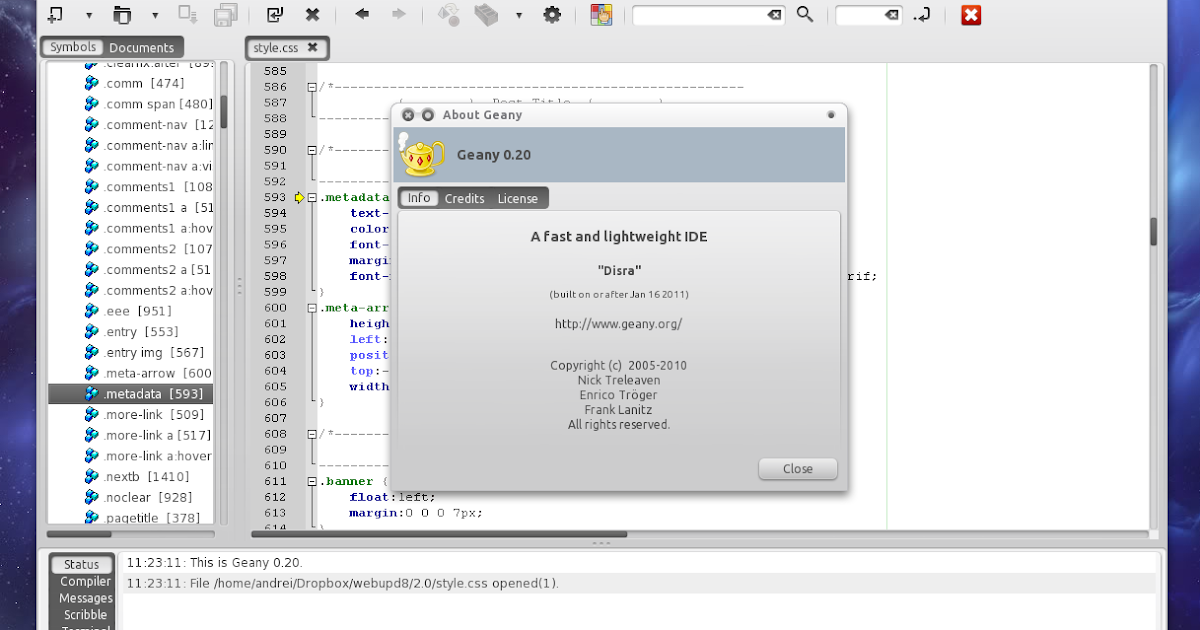

When I realized that wasn’t optimal, I installed all of the color. In installed the nf files in usr/share/geany/colorschemes st first (but made a backup of the whole geany folder first). – a reader had troubles with the configuration file (always reverting to its original state, or not being read correctly by Geany), scroll down to Novemin the comments if you have the same issues! Restart Geany and there you have your nice dark theme 🙂 So, to set your theme to tango-dark you shall have this line in your nf file: You must specify the whole file name of the color scheme you wish to use, without its path (it must be in the ~/.config/geany/colorschemes folder anyway).

If you’re out of luck (no list for you) you must edit Geany’s configuration file ~/.config/geany/nf and find the color_scheme line. Wget -qO- | tar jxv -C ~/.config/geany/filedefs/Īfter you’ve downloaded the color schemes and before editing the configuration file as described here below try to restart Geany and check if there’s an entry under View/Editor>Color Schemes> if it’s there you can choose among all installed color schemes from a nice list! 🙂

INSTALL GEANY THEMES INSTALL
– unjordi posted a nice command line one-liner to get and install the geany-dark color schemes, here it is: not that easy to choose from Geany’s interface! I discovered this project on GitHub with several available themes, very easy to install (as in execute-install-script-with-no-options) but. The one thing that I like more in Sublime than in Geany is its look: it’s very elegant, but in the end what I really missed in Geany was a dark editor theme. After trying Sublime for a while, and quite liking it, I found myself in the middle of a deep customization of the editor… to make it work like Geany!įor quick editing of local bash/python scripts or configuration files there’s no editor that meets my taste better (I said local cause when dealing with remote files my all-time favorite is vim).


 0 kommentar(er)
0 kommentar(er)
